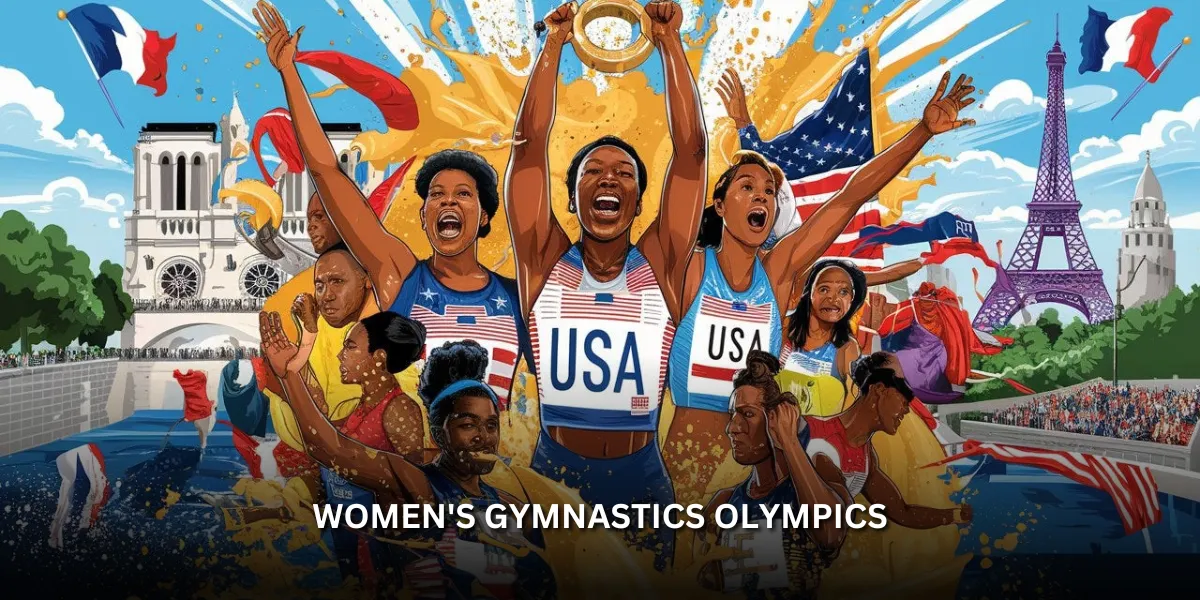
Women’s Gymnastics Olympics: A Showcase of Strength, Grace, and Skill
Introduction: The Allure of Women’s Gymnastics
Women’s gymnastics at the Olympics is a mesmerizing fusion of strength, grace, and skill that captivates audiences worldwide. Each Olympic Games offers a stage where the world’s most talented gymnasts perform routines that highlight their athleticism and artistic expression. The sport’s allure lies in its ability to blend physical power with elegant choreography, creating performances that are both exhilarating and awe-inspiring. From the balance beam to the floor exercise, the complexity and beauty of gymnastics continue to captivate spectators and inspire future athletes.
The Evolution of Women’s Gymnastics
Since its Olympic debut in 1952, women’s gymnastics has undergone a profound transformation. Initially, the sport emphasized elegance and grace, with routines often resembling ballet performances. However, over the decades, the sport has evolved dramatically. Today’s gymnastics demands not only delicate artistry but also exceptional physical strength and precision.
1950s-1960s: The early years focused on traditional elements, with gymnasts performing routines that emphasized poise and fluidity. The equipment and techniques were simpler, reflecting the sport’s nascent phase.
1970s-1980s: This era saw the emergence of more complex routines and the introduction of the full-twisting vault and other challenging elements. Nadia Comăneci’s perfect 10 in 1976 marked a significant milestone, pushing the boundaries of what was thought possible.
1990s-Present: Modern gymnastics features incredibly high difficulty routines and skills that push the limits of human capability. Gymnasts like Simone Biles have redefined the sport with groundbreaking moves that combine both athletic prowess and artistic innovation.
Key Events in Women’s Gymnastics
The Olympics have been a platform for many of gymnastics’ most historic moments. Each event showcases different aspects of a gymnast’s abilities and offers a unique challenge.
All-Around Competition: This event tests a gymnast’s versatility across all four apparatuses: vault, uneven bars, balance beam, and floor exercise. The all-around competition is a rigorous test of a gymnast’s overall ability and consistency.
Vault: Known for its explosive power and precision, the vault is a high-flying event where gymnasts execute dynamic flips and twists after a sprint down the runway.
Uneven Bars: This event highlights a gymnast’s upper body strength and agility. It involves a series of complex maneuvers on two horizontally spaced bars.
Balance Beam: The balance beam combines balance, precision, and artistry. Gymnasts perform intricate routines on a narrow beam, showcasing their stability and grace.
Floor Exercise: This event is a combination of acrobatics and choreography. Gymnasts perform a choreographed routine set to music, demonstrating their flexibility, strength, and creativity.
Iconic Gymnasts Who Shaped the Sport
Throughout history, several legendary gymnasts have left an indelible mark on the sport.
Nadia Comăneci: The Romanian gymnast’s perfect 10 in the 1976 Montreal Olympics was a game-changer, setting new standards for the sport and captivating audiences worldwide.
Simone Biles: With her unparalleled skills and innovative routines, Simone Biles has redefined gymnastics. Her achievements include the triple-double and the Yurchenko double pike, pushing the sport into new realms of difficulty and artistry.
Mary Lou Retton: As the first American woman to win the all-around gold medal in 1984, Retton became a household name and a trailblazer for American gymnasts.
Olga Korbut: Korbut’s performances in the 1972 Munich Olympics introduced the world to a new level of gymnastics artistry and technique, earning her a place in the sport’s history.
The Challenges and Sacrifices
The road to Olympic success is paved with challenges and sacrifices. Gymnasts undergo years of intensive training, which requires immense dedication and resilience.
Physical Demands: The sport’s physical requirements are rigorous. Gymnasts must develop not only exceptional strength and flexibility but also endure frequent injuries. The repetitive strain of training can lead to conditions like stress fractures and muscle strains.
Mental Fortitude: The psychological pressure of competing on the world stage can be overwhelming. Gymnasts must manage intense expectations and the fear of injury while maintaining focus and performing under scrutiny.
Sacrifices: Many gymnasts start training at a young age, which often means sacrificing time with family and friends. The rigorous training schedule leaves little room for other activities, as athletes dedicate their lives to perfecting their routines.
The Impact on Women in Sports
Women’s gymnastics has been instrumental in breaking down barriers and reshaping perceptions about female athletes. The sport has:
Challenged Gender Norms: Female gymnasts have proven that women can excel in physically demanding sports, challenging traditional gender roles and stereotypes.
Inspiring Young Athletes: Gymnasts like Simone Biles have become role models for young girls, encouraging them to pursue their dreams and believe in their capabilities.
Promoting Body Positivity and Mental Health: The sport has also sparked conversations about body image and mental health. Many athletes have used their platform to discuss these issues openly, helping to foster a more supportive and understanding environment in sports.
The Future of Women’s Gymnastics
Looking ahead, the future of women’s gymnastics promises continued evolution and innovation. As technology advances and new training methods are developed, athletes will push the boundaries of what is possible in the sport.
Technological Advancements: New equipment and training technologies will enhance performance and safety. Innovations such as advanced replay systems and virtual reality training may become integral to gymnastics.
Emerging Talent: The influx of young, talented gymnasts from around the world ensures that the sport will continue to evolve. Future Olympians will bring fresh perspectives and techniques, driving the sport forward.
Increased Popularity: As gymnastics gains more international exposure and continues to capture the public’s imagination, its global appeal will expand. The Olympics will remain the premier stage for showcasing the sport’s most extraordinary talents.
Conclusion
Women’s gymnastics remains one of the most dynamic and thrilling sports featured at the Olympics. Its blend of strength, grace, and technical mastery continues to captivate audiences and inspire future generations. As the sport evolves, the Olympic stage will undoubtedly showcase even more remarkable achievements and groundbreaking routines, solidifying gymnastics’ place as a premier athletic spectacle.

